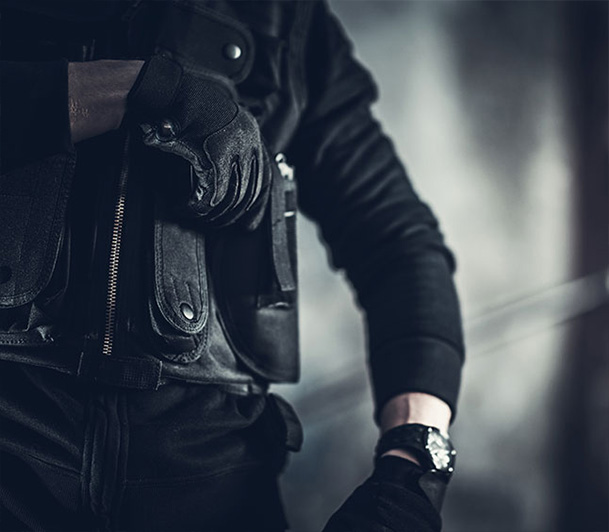
There are various risks that you face anywhere that you go. Whether you’re in the city or in the sticks, thousands of miles from home or just down the street, dangerous situations can always present themselves. Ex-boyfriends/girlfriends, ex-wives/husbands, former employees, or even complete strangers. Anyone can pose a threat or seek to intimidate at any time, so it’s important to always be prepared. Just like the Boy Scouts. In this post, I will be teaching you the best ways to protect yourself and others.
There are usually indicators that your safety may be compromised—the guy at the deli is being especially pesky, that creepy guy keeps on popping up on your route during your morning run, your rabbit’s been boiled. You get the idea. You’ll have a spidey-sense that something isn’t right, even if you’re not entirely sure what it is. That’s your human intuition. Don’t just ignore it with rationalization because you’re “in a good neighborhood”.
Dan Ribacoff‘s 3 Personal Protection Principles:
- Constant awareness
- Scanning your environment
- Taking proper precautions
Constant Awareness
Some people are completely oblivious. You could tail them for 100 miles and they would never notice. Others are on the complete opposite side of the spectrum and become alert the second that someone walks near them or drives behind them for more than a few minutes. They have constant awareness. If you were a stalker, whom would you follow, Mr. Ignorant or Mr. Cognizant? Exactly. By being aware, you make yourself so much more protected than you would be otherwise. You can’t just walk around like everything’s rosy all the time with your headphones in, because situations change based on who you are, where you are, and even when you are (The New York City subway is a lot safer at 9:00 AM than it is at 11:00 PM). It’s time to raise your level of awareness, especially if you suspect that you’re being harassed, followed, or stalked.
Just as the United States Government has its yellow, orange, and red threat levels, you need to have those as well. I once had a client who’s daughter’s college boyfriend was staying with them over the summer to take some classes, as they lived much closer to the university. My client said that his daughter was head over heals for this guy and him and his wife liked him too—he’s a nice kid, and his father’s a police chief. Sound’s like a match made in heaven, right? Wrong. Systematically, money started to go missing from my client’s house. He then noticed that his wife’s jewelry and the pills in medicine cabinet started to go missing as well. I told him he should have called me the first time that something went missing, and I would’ve hidden cameras installed. “Yeah,” he said, “but I didn’t want to believe it.” If my client would have raised his level of awareness the first time something went missing, he could have solved the problem much sooner and caught the runt red-handed.
Scanning Your Environment
Arson, acts of terrorism, street crime—these are all dangers that we face in today’s world. You have to be mindful of your surroundings not only for your own protection, but also to protect others as well. I see so many people with their head buried in their phones, totally oblivious to everything going on around them. They concentrate more on what they are doing rather than what’s going on in the environment around them and call it “multi-tasking”. The human mind can only do so many tasks at a time before it overloads itself, so it’s important to focus on your personal safety in addition to your twitter feed or what you’re planning on having for dinner. Think tactically:
- Locate all exits: Whenever you enter a building, familiarize yourself with the location of all the nearest entrance and exit points (The same way that you would on an airplane).
- Use your peripheral vision: When I’m walking around a city or on a main, busy street, I am always using my peripheral vision. It may seem like I’m looking into a store window, but I’ll actually be using the reflection in the glass to see what’s going on behind me.
- Plan Scenarios: Ask yourself, “If something dangerous were to happen right now, how would I find safety?” Would you have a plan? Would you know what to do?
Taking Proper Precautions
On an average day, your personal threat level is on yellow. Even if you’re sitting in a police station, you don’t know if some lunatic is going to come in with an AK-47 (he would be Swiss cheese in a matter of seconds, but you get the point). That’s why it’s alway best to maintain a routine state of alertness. It’s no different than keeping a jack in your car; you want to be prepared just in case. However, if you feel you’re being stalked or followed, your everyday state of awareness needs to be raised and accompanied by a call to action:
- Seek Help: Obviously, locate a police officer. That’s what the police are there for. They don’t charge and you pay taxes, so don’t be afraid to approach one. If there are no officers around, duck into the nearest restaurant, store, or place where there are lots of people around. Tell the clerk, security guard, somebody bigger than you who looks respectable, “This guy is following me.” Most people are willing to help somebody in distress. If you’re in the car and and feel like you’re being tailed, dial 911, describe the car that’s following you as best as you can (make, model, color, any digits of the license plate that you can see). Make sure to keep moving to avoid getting boxed in. You can even drive to the nearest precinct if you know where that is. If you’re on the highway, go to a rest area with restaurants and a gas station.
- Alter your Schedule: The more predictable you are, the easier you are to find. Leave at different times to go to work. Use different entry and exit points of a building. Take a later train.
- Vary your Routes: Mix it up a little bit! Cross the street when you don’t necessarily have to (remember to look both ways). Stop and look in a store window for a few seconds. If you find that a certain person is always there, even if you change up your walking speed or route, seek help immediately. The same goes for driving as well. When I was a jewelry salesman, I often had to check for tails, so I would never go directly from jeweler to jeweler. These days, however, a stalker has the ability to track your car with GPS, which is illegal. Normally a GPS will be in the form of a magnet stuck under your car, so take a look underneath or bring it to a mechanic or even a bug-sweeper to take a look as well.
- Change up your Appearance: If you want a good way to throw off a tail, you can change up your look every day. I had a client in the diamond business who would come to and from work every day in a bunch of different wigs, hats, sunglasses, baggy clothes, etc. and it worked to perfection. Refrain from wearing any signature items that might give you away, like an Indiana Jones fedora or big-rimmed sunglasses.
- Dress Appropriately: If you’re going to wear a pencil skirt and 4 inch heels, you’re not going to be able to protect yourself or run away from anybody.
- Protect your Personal Space: This is very important. The space between you and another person should be an arm’s length at the very least. Why? Personal space gives you reaction time. Think of when you’re driving a car and someone is right up your tail. If you hit the brakes, bang. Same with personal space—if a person is walking too closely to you, you have less time to react if he or she tries to physically harm you.
- Make a Scene: You shouldn’t be afraid to scream or make a commotion when you feel immediately threatened. The police won’t arrest you for jumping up and down like a lunatic, but it will certainly get their attention. When you draw attention, the bad guys lose the element of surprise, and their natural reaction is flight.
Pepper Spray

Pepper spray is a useful and nonlethal self-defense weapon. It is also perfectly legal to carry if you are 18 or older (just don’t carry it onto an airplane or into any stadium or arena). An inflammatory agent, pepper spray, which typically comes in canisters, is a chemical compound that irritates the eyes to cause tears, pain, and temporary blindness. It is often confused with mace, which is an irritant and is not legal for personal use.
Pepper spray can render an assailant for anywhere from 15 minutes to an hour. The police use it, mail carriers use it, and civilians should most definitely carry it, especially women living alone or taking public transportation at night. You can purchase it at any local sporting goods store, drugstore, gun dealership, or online.
It’s important that you receive some pepper spray training because pepper spray can be used against you as well. There are several rules to effectively using pepper spray:
- Aim for the chest. Your initial reaction may to be to go for your assailant’s head, but the head is a much smaller target. Rather, aim for the chest and then tilt up from there.
- After you pepper-spray the assailant, get out of there. Run, scream, yell. You don’t have to stick around, nor should you.
- Pepper spray doesn’t belong at the bottom of your purse or backpack. Keep it in your coat pocket for quick and easy use if you do need to protect yourself.
- Be mindful of the wind! You can actually spray yourself if the wind is blowing towards you.
- If you do end up getting pepper sprayed—either from wind blowback or your assailant using it against you—rinse your eyes thoroughly with fresh running water. When I was in the police academy and working as a reserve, the higher-ups would ask the cadets, “Why did you stick that guy’s head in a toilet bowl and flush?” The answer, “He got pepper-sprayed! Plenty of fresh running water!” Cop humor.
Don’t be a Bling-A-Ling
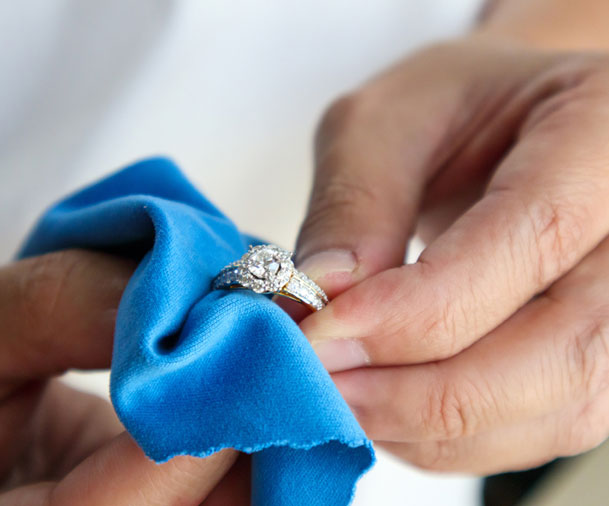
When you advertise, you usually get clients, so always keep your valuables at home or under wraps. Who is a thug going to rob: An upper-middle-class woman with the diamond ring and an expensive suit or some lady who looks like she’s borderline homeless? The nicer you look, the more likely you are to attract attention, and cellphones are just as much of a target as jewelry, so keep them out of sight.
Common Household Items

When it comes to self-defense, a weapon is not really a weapon until you use it as such, and many common household items can moonlight as weapons when needed to protect yourself:
- Keys
- A rolled up magazine
- Handbags
- Belts
- Umbrellas (my personal favorite)
Self-Defense
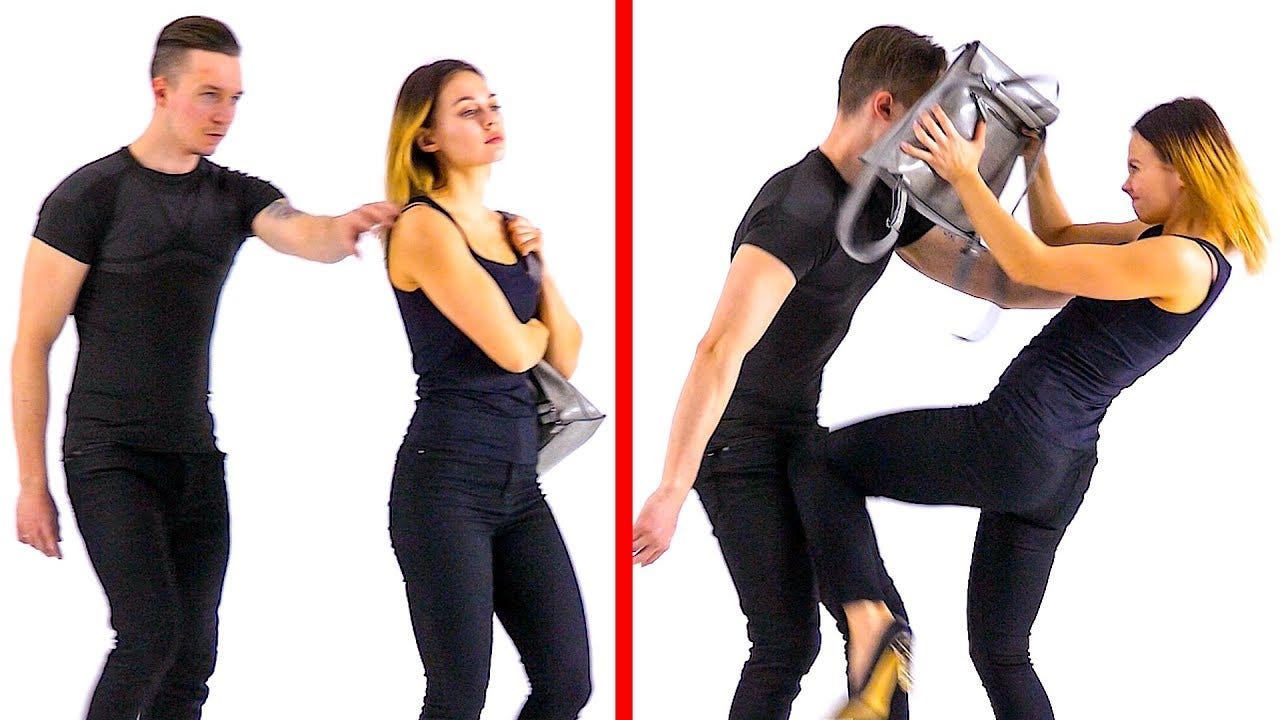
No normal person wants to fight, but if you’re attacked, you need to win and you need to win quickly. You want to render your assailant incapacitated or injured, and leave quickly. Achieving this can be relatively easy if you know where to strike. There are various places of vulnerability on the human body. Use them:
- Groin: The old tried and true. The groin offers a great target, especially for close encounters when most people are focused on the upper body. Always try to hit low first—bam with a knee strike. At the very least, your assailant will step back in pain, increasing your space and reaction time. And if you’re grabbed from behind, reach back and go for the “family jewels”. Squeeze and twist!
- Throat: In a life or death situation, it doesn’t matter how big you are, you can’t protect your Adam’s apple, even if you’re a professional UFC fighter or an NFL linebacker. It only takes about 3 pounds of pressure to break a trachea, and you can’t strengthen it in any way like you can a bicep or pectoral muscle. If you ever find yourself in a situation where someone is on top of you and choking you, go on the offensive and hit their Adam’s apple as hard as you can or grab their trachea and try to crush it.
- Brachial Plexus: The brachial plexus is a bundle of nerves that runs down the side of the neck and through the shoulders; it controls movement and feeling for arms forearms and hands. By striking it with a fist or the side of your hand, you can interrupt motor activity and cause temporary dysfunction and near paralysis to that side of the upper body. All you have to do is aim right for the spot where the neck and shoulder meet. Like the throat, there is no way to protect it.
- Fingers: Snap the pinky or ring finger. When you break someone’s finger, they may lose the will to fight. In a life or death situation, you can even use your teeth to bite off someone’s finger if you really have to. It only takes the the amount of pressure that it would take to bite through a carrot.
- Nose: If you’re grabbed from behind, throw your head back and head-butt the assailant’s nose. Being hit in the nose is incredibly painful and will cause the assailant’s eyes to tear up, temporarily blinding them.
- Eyes: If the bad guy can’t see, he can’t harm you. If someone is on top you and trying to harm you, use your thumbs to gouge their eyes out. Start in the corners by the nose and apply pressure. Do what you need to do to be safe.
Staying Safe from Shootings
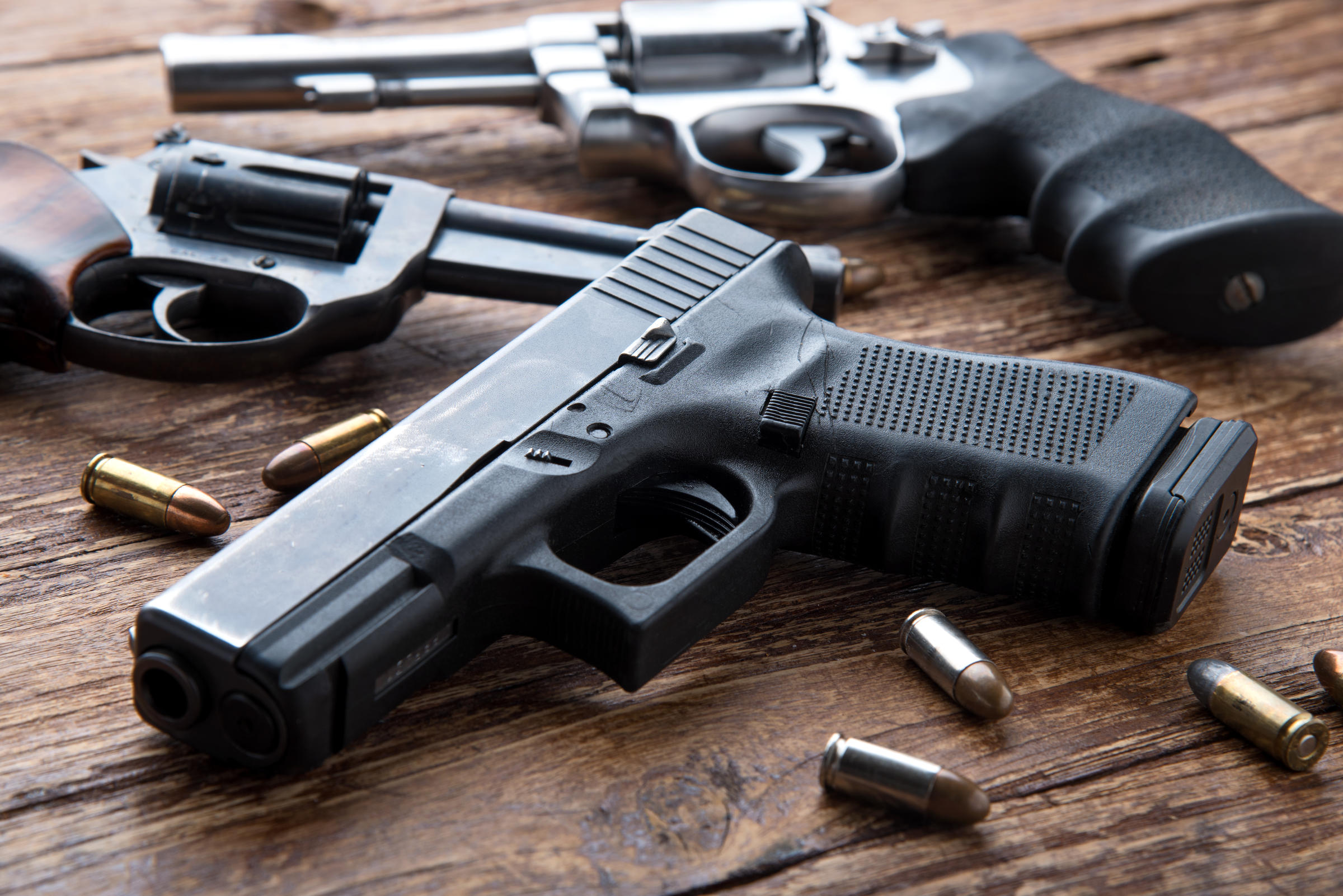
Unfortunately, nowadays, we have to contend with all kinds of shootings—mall shootings, street shootings, school shootings—and it’s imperative that we learn how to protect ourselves. In order to do this, we have to mentally prepare ourselves and our families to know what to do and what to look for before and incident takes place, because once it does, there’s no time to think.
- Cover: Most people freeze when they see or hear gunfire. The best thing that you can do his get behind something to shield the fire:
- Fire hydrant: Although it won’t protect you fully, you can squat down and turn sideways behind a fire hydrant, making you a much smaller target.
- The engine part of a car: Duck down and huddle behind the front of a car by the front tire. A bullet can’t penetrate an engine block and the tire will shield you from any ricochets.
- Brick wall: Most walls are sheet rock and won’t protect you from a bullet. You want to hide behind solid wall of brick, concrete, etc.
- Lie Down Flat: If you can’t find cover, try to lie flat on the ground and protect your head with your arms. It’s better to take a bullet to the arm than the head. If you are shot, the best thing you can do is play dead.
- Concealment: If you can’t find cover, the best way to protect yourself is to look for concealment. Look for something to hide behind that will keep you hidden. Bad. guys typically don’t shoot what they cannot see.
- Empower your children: When I was a kid, we had nuclear drills and fire drills. Today, there should be numerous shooting drills taught in all schools. Unfortunately, most schools are unprepared when this occurs and the first thing they yell is “Everybody hide in the closet!”. While it may work, we can instead teach our children to protect themselves with simple techniques in the unlikely even that a school shooting occurs:
- Knowing exit points of the building
- Run as far away as possible from the source of the gunfire as fast as possible
- Knowing safe and concealing hiding places
- Knowing to use their resources for cover or concealment (turning over tables, desks, etc.)
How we can Protect You
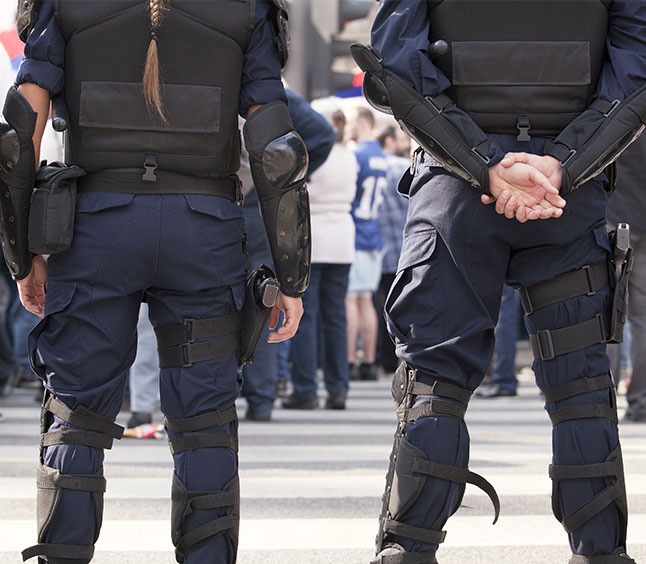
Here at The International Investigative Group, we have a team of licensed agents who are highly trained and experienced in both security and protection. Our team of former law enforcement has been protecting our clients with a a variety of armed and unarmed services for over 30 years.
